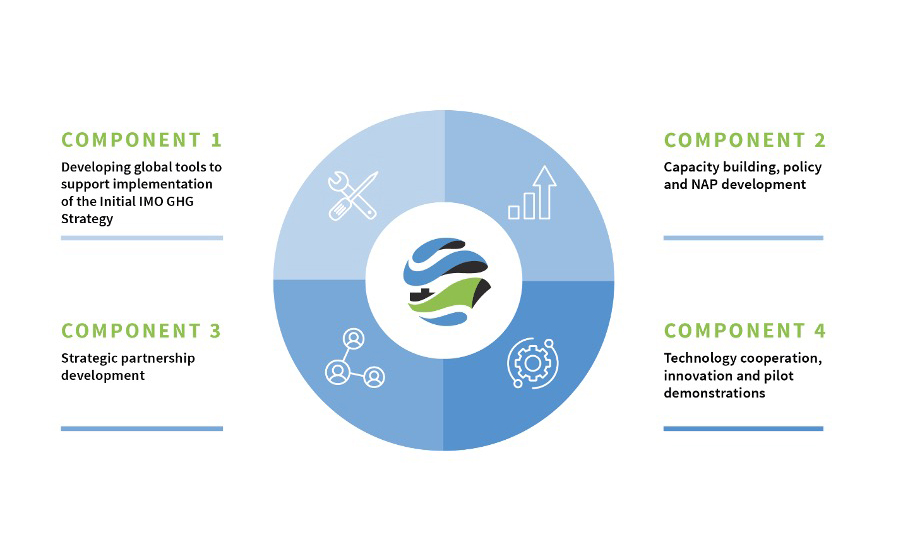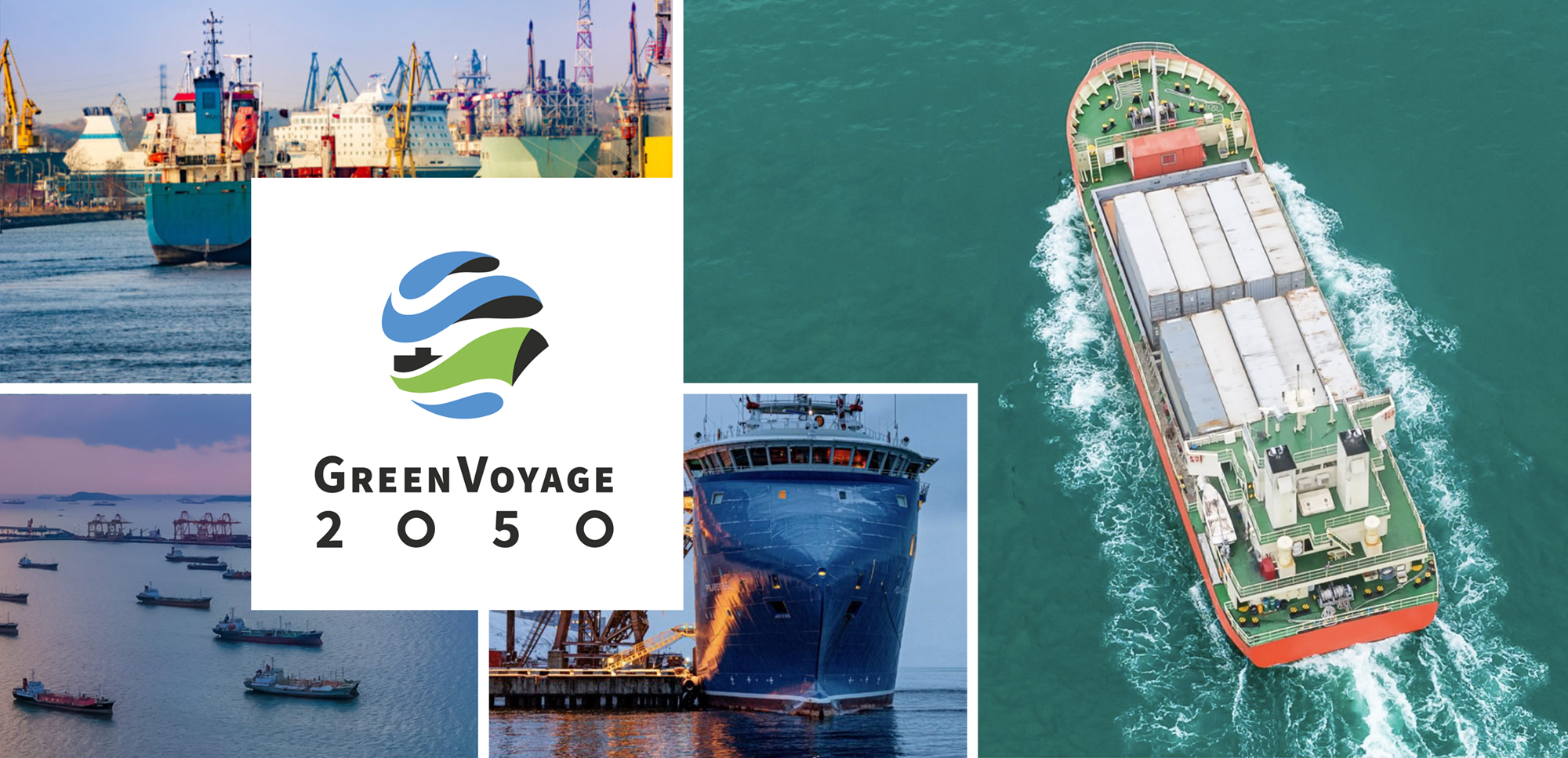IMO-Norway project is supporting States to implement energy efficiency measures and explore opportunities for low carbon shipping.

GreenVoyage2050 has four main components
Eleven States from across the globe are partnering in the International Maritime Organization (IMO)-Norway GreenVoyage2050 Project, which is supporting the path to decarbonization in the shipping sector, in line with the IMO Initial Strategy on the reduction of greenhouse gas emissions from shipping (IMO Initial GHG Strategy).
Through the IMO Initial GHG Strategy, IMO Member States have pledged to cut annual greenhouse gas emissions from international shipping by at least half by 2050, compared with their level in 2008, and work towards phasing out GHG emissions from shipping entirely as soon as possible in this century.
The GreenVoyage2050 Project is actively supporting States in progressing in this decarbonization path. The project will also build capacity in developing countries, including small island developing states (SIDS) and least developed countries (LDCs), to fulfil their commitments to meet climate-change and energy-efficiency goals for international shipping. This will be achieved through supporting States in implementing the already-adopted IMO energy-efficiency measures (contained in Annex VI of the International Convention for the Prevention of Pollution form Ships (MARPOL)) and to reduce GHG emissions from ships in line with the IMO Initial GHG Strategy.
As of today, Azerbaijan, Belize, China, Cook Islands, Ecuador, Georgia, India, Kenya, Solomon Islands, South Africa and Sri Lanka are partnering countries in the GreenVoyage2050 Project.
Through their participation in the project, they will aim to strengthen their MARPOL Annex VI compliance, facilitate sharing of operational best practices, catalyze the uptake of energy efficient technologies and explore opportunities for low- and zero-carbon fuels. New fuels, new technologies and innovation will be needed to meet the IMO GHG Strategy ambitions.
Specifically, the project is supporting States to:
* draft legislation to implement MARPOL Annex VI into national law;
* undertake assessments of maritime emissions; develop policy frameworks and National Action Plans (NAPs) to address GHG emissions from ships;
* assess emissions and develop port-specific emission reduction strategies;
* identify opportunities and deliver pilot projects, through the establishment of public-private sector partnerships and mobilization of financial resources;
* access funding and investments into low carbon solutions; and
* establish partnerships with the industry to develop new and innovative solutions to support low carbon shipping.
The project is also supporting cooperation between ship and port sectors in the individual States.
“New Pilot Countries” and “Pioneer Pilot Countries”
Since individual States are at different stages in terms of implementation of IMO’s energy efficiency measures and other processes such as baseline assessments, the partnering countries have been categorized into “New Pilot Countries” and “Pioneer Pilot Countries”.
New Pilot Countries (NPCs) are those that, as a first step, are undertaking the development of a national maritime emissions assessment, establishing a baseline and building the information base. These actions will lay the foundation for the development of a robust and informed National Action Plan (NAP) to address GHG emissions from ships.
New Pilot Countries are: Azerbaijan, Belize, Cook Islands, Ecuador, Kenya, Solomon Islands, Sri Lanka.
Pioneer Pilot Countries (PPCs) are those that have already undertaken maritime emissions baseline work and have initiated development of their NAP to address GHG emissions from ships. The GreenVoyage2050 Project is supporting PPCs to finalize their NAP, identify pilot project opportunities and develop them further with a view to securing funding for their implementation.
Pioneer Pilot Countries are: China, Georgia, India, South Africa.
All partnering countries will be provided training on the regulatory developments related to MARPOL Annex VI and the Initial IMO GHG Strategy, as well as training on key low carbon technologies and fuels.
Other activities include capacity-building on sustainable port initiatives and measures to reduce emissions at the ship-port interface.
Global Industry Alliance to Support Low Carbon Shipping (Low Carbon GIA)
GreenVoyage2050 Project also has a strong private sector collaboration. The IMO-GreenVoyage2050 Global Industry Alliance to Support Low Carbon Shipping (Low Carbon GIA) is a public–private partnership which aims to identify and develop innovative solutions to address common barriers to the uptake and implementation of energy efficiency technologies and operational measures.
Websites and additional information:
The GreenVoyage2050 website can be found here: https://greenvoyage2050.imo.org/
About the Low Carbon GIA: https://greenvoyage2050.imo.org/about-the-gia/
GreenVoyage2050 is one of a series of projects under IMO’s Department for Partnerships and Projects. Find out more here: Partnerships and Projects (imo.org)
